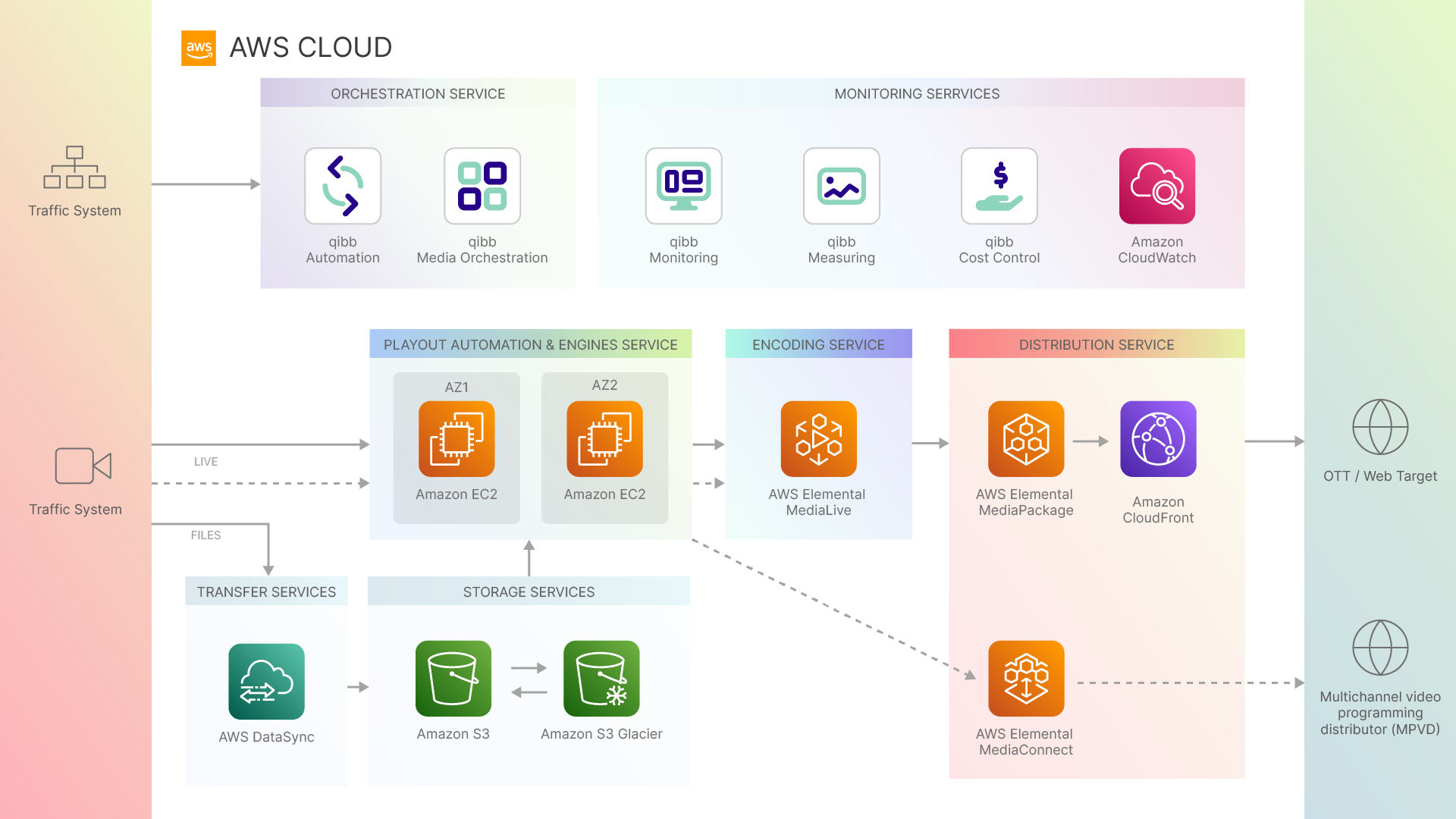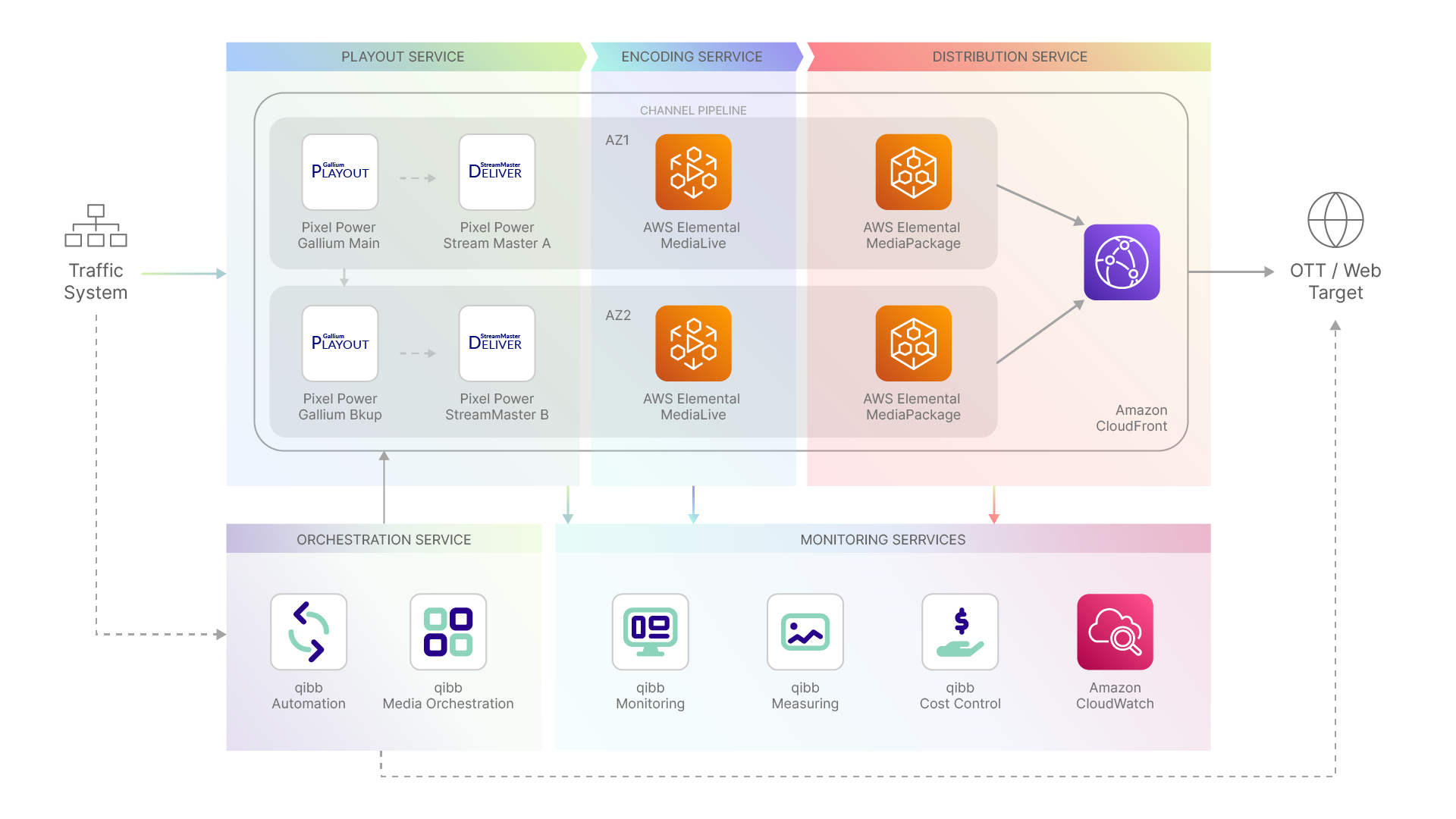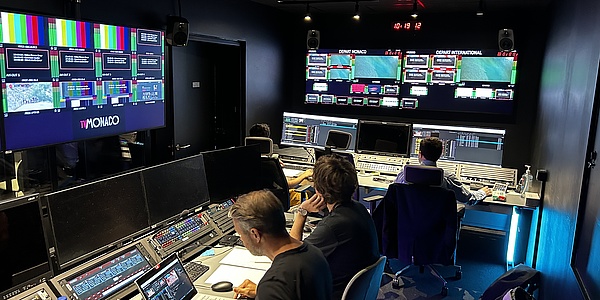
Cloud Pop-Up Channels

Event Channel Playout solution on AWS
In the age of social media distribution, we see more and more demand for broadcast channels for events, sport tournaments, and limited duration pop-up channels. Customers need to quickly create, provision, test, and operate a channel. Customers also need the ability to decommission the channel shortly after the end of the event.
These customers also want flexible distribution options, including traditional linear broadcast and digital distribution. Cloud-based production and distribution meets all of these requirements. This is why we developed the Qvest Event Channel Playout solution on AWS using qibb, a cloud application management and orchestration platform from Techtriq.
Solution overview
Qvest´s Event Channel Playout allows customers to quickly launch a complete pop-up channel on AWS. It also allows customers to deploy on-premises or using hybrid architecture, providing the flexibility to migrate media workloads gradually to the cloud.
The solution uses AWS services and third-party playout products and includes the following services:
- Playout Automation and Engines service
- Storage service
- Transfer service
- Encoding service
- Distribution service
- Orchestration service
- Monitoring service
Customers can install and launch all elements of a new channel in minutes, much faster than the time needed to prepare media and schedules for an event.
Solution components
As key integration component Qvest uses is qibb ultimate from Techtriq. qibb ultimate is a cloud application management and orchestration platform for hybrid and cloud infrastructure environments specifically designed for media companies. The playout solution uses the AWS Elemental Media Services and other AWS services to create the full playout chain.

Playout system
The solution includes integration with the Makalu cloud-based playout automation system from HMS Media Solutions, or Pixel Power’s Gallium PLAYOUT scheduling and asset management solution and the StreamMaster DELIVER graphics and branding tool. Customers can also incorporate other third party products for additional functions such as quality control of the audio and video, watermarking, or to create variable bitrate formats.
The playout solution can also switch between recorded content and live ingest with support for several formats and protocols. Customers tend to prefer compressed formats with protocols like SRT, RTSP or NDI, RTMP, or RIST.
A playlist controls the playout system. Customers can import playlists from an existing traffic system, or they can create playouts manually using the playout system. The playout tool supports connections to the console using a PC-over-IP (PCoIP) solution like Teradici or Remote Desktop Protocol (RTP) on Windows instances.
With the playlist defined, the user can check and preview the existing assets, control the channel, switch to live events and back to playlist, and monitor the output of the channel.
Customers have the option to configure the playout solution to run in a single AWS Availability Zone (AZ) or distributed across multiple AZs in one or more AWS Regions for added availability. The following diagram illustrates an example of a redundant channel pipeline for OTT delivery based on Pixel Power products running in two AZs:

In this example, the main Gallium PLAYOUT instance controls one StreamMaster DELIVER component in AZ1. The backup PLAYOUT module in AZ2 remains synchronized with the main module. If a problem occurs in AZ1, the backup PLAYOUT takes over the control of the remaining DELIVER module. Both DELIVER components are connected to AWS Elemental MediaLive that runs in a redundant, Multi-AZ configuration and automatically switches between primary and backup input signals. MediaLive is a broadcast-grade live video processing service. It lets you create high-quality video streams for delivery to broadcast televisions and internet-connected multiscreen devices, like connected TVs, tablets, smartphones, and set-top boxes.
Customers can easily modify this architecture to work with different third-party playout products. If the playout system can be virtualized and has an API, qibb can manage the third-party playout system in both single and Multi-AZ, configurations. Qvest has the connectors and the experience to adapt to new interfaces, if needed, for specific customer requirements. We can also support the third-party product by optimizing the cloud compute services and apply the most appropriate pricing model to efficiently control operational cost.
AWS Elemental Media Services
MediaLive performs the encoding of the playout output for distribution. The service works by encoding live video streams in real-time, taking a larger-sized live video source and converting it into smaller versions for distribution to the viewers. Customers can use AWS Elemental MediaPackage to reliably prepare and protect video for delivery over the internet. MediaPackage is a highly scalable, video origination and just-in-time packaging (JITP) service that helps video providers securely, reliably and cost-efficiently package and deliver live video streams. Customers can also add multi-DRM encryption to protect content for multiple delivery formats. MediaPackage also simplifies the implementation of time-shift features like start-over, pause, and rewind, and it supports time-shifted viewing for content that’s up to 336 hours (14 days) old. Customers can also harvest a clip of a live stream and make it available as a video on demand (VOD) asset. MediaPackage supports Direct-to-Consumer (D2C) delivery and distribution to third parties like content aggregators and distributors. MediaPackage is CDN agnostic, offering customers an easy way to implement a multi-CDN strategy.







